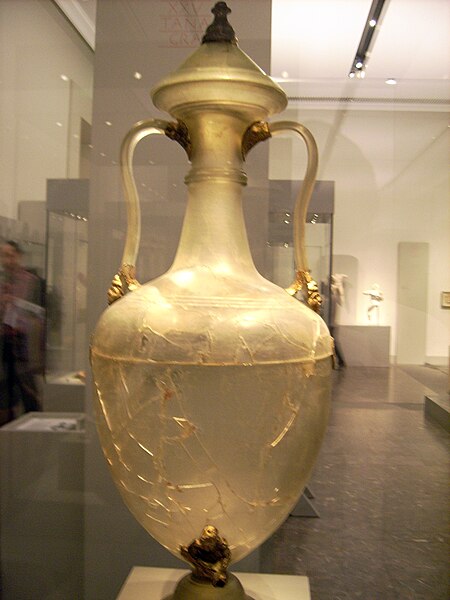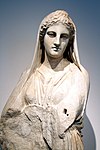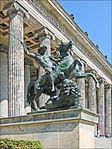Berlin glass amphora from Olbia
Altes MuseumAntikensammlung BerlinArchaeological discoveries in UkraineGlass works of artGlassmaking in classical antiquity

The Berlin glass amphora from Olbia (German: Berliner Glasamphora aus Olbia) is a Hellenistic glass vessel in the shape of an amphora, which is now kept in the Antikensammlung Berlin. Presumably the glass amphora was commissioned by a rich citizen of the city of Olbia, where it was later found, in the second half of the second century. The uniquely shaped vessel was donated to the collection, with some other glass vessels, by Friedrich Ludwig von Gans in 1912 and is now displayed in the Altes Museum with the inventory number 30219, 254. It is, to date, the largest known piece of its kind - and one of the best preserved.
Excerpt from the Wikipedia article Berlin glass amphora from Olbia (License: CC BY-SA 3.0, Authors, Images).Berlin glass amphora from Olbia
Am Lustgarten, Berlin Mitte
Geographical coordinates (GPS) Address Phone number Website Nearby Places Show on map
Geographical coordinates (GPS)
| Latitude | Longitude |
|---|---|
| N 52.5194 ° | E 13.3983 ° |
Address
Altes Museum
Am Lustgarten
10178 Berlin, Mitte
Germany
Open on Google Maps









